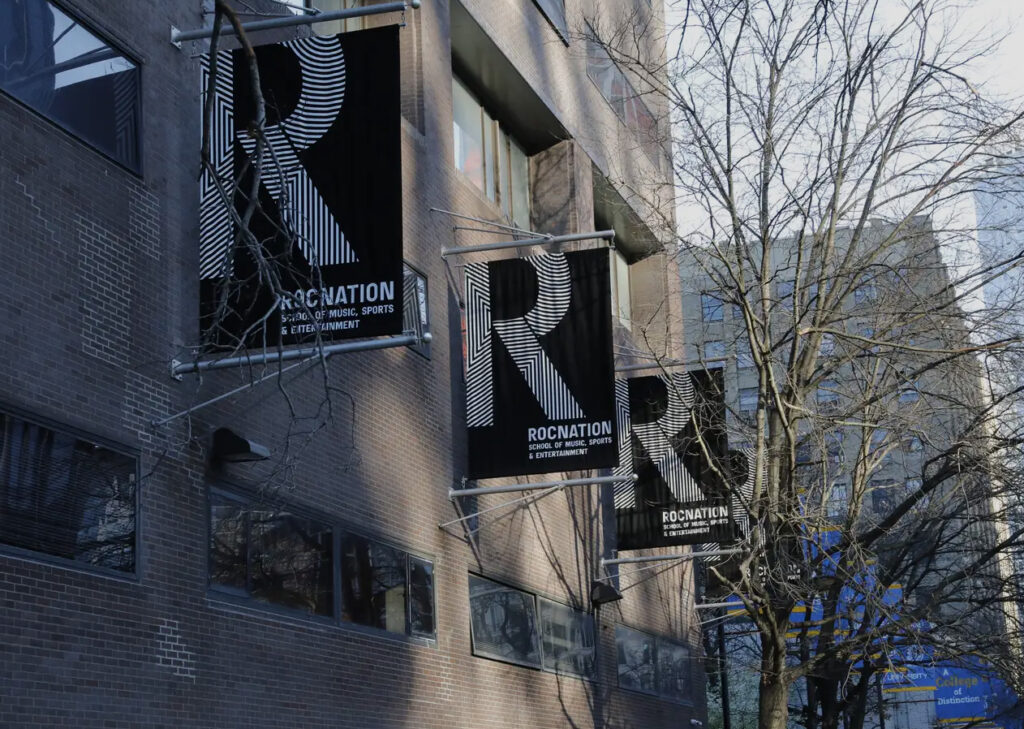In a city where opportunity is currency and cultural capital rules, the launch of a school bearing the imprimatur of Roc Nation seemed to suggest more than just higher learning—it implied ascendancy. For a generation raised on the hustle ethos of hip-hop and the aspirational architecture of New York ambition, the Roc Nation School of Music, Sports & Entertainment at Long Island University (LIU) Brooklyn offered the perfect intersection of artistry and academia.
It was the kind of announcement that felt stitched into the contemporary American mythos: a school created in partnership with an entertainment dynasty, offering “Hope Scholarships” to underserved youth, promising full tuition, and most notably—freedom from student debt. For those invited, it wasn’t merely an acceptance letter. It was, as one student recalled, a dream made tangible through text message.
But dreams—especially those marketed with glossy intent—have their terms. And not all of them are clearly stated.
The Seduction of Simplicity
What the Roc Nation School offered was compelling. Designed to train the next generation of music producers, sports executives, and cultural entrepreneurs, it was a curriculum dressed in aspiration. Promotional materials boasted of courses taught by insiders, mentorships with professionals, and a tuition-free pathway for “high-need” students via the Hope Scholarship.
For Justice Stephenson, a Brooklyn-born vocalist with raw talent and uncertainty about her future, it seemed too good to ignore. A message from the university’s president claimed she would receive a full-tuition scholarship that would allow her to graduate without debt. Her mother encouraged her to go. And so, like many others, she did—believing she’d been invited not just to school, but to a movement.
She wasn’t wrong. She just didn’t get the full terms.
The Beauty—and Blindness—of Branding
The term “Hope Scholar” conjures a distinct image: of uplift, access, prestige. But in higher education, language can be both instrument and illusion. A full-tuition scholarship is not a full-ride. And the phrase “graduate without debt,” when not itemized with precision, becomes more promise than policy.
Students like Stephenson, now nearing graduation, found themselves confronting balances ranging from $5,000 to nearly $40,000—amounts that were never anticipated, and in many cases, not communicated clearly until it was too late. A number of these students shared correspondence showing offer letters and emails that omitted critical disclaimers about housing, meal plans, health insurance, or activity fees.
To the hopeful, “full tuition” became synonymous with “free.” In reality, it was a beginning—not an end.
The Economics of Enrollment
What unfolded at LIU-Brooklyn mirrors a broader national phenomenon: the increasingly corporate mechanics of college admissions. In a landscape shaped by dwindling enrollments and fierce institutional competition, universities have turned to marketing strategies once reserved for lifestyle brands. Buzzwords like “access,” “equity,” and “debt-free” dominate recruitment language, often overshadowing the financial fine print.
To some, the Roc Nation collaboration represented an inspired rebranding of educational models. To others—particularly those now in debt—it suggested a campaign designed more to fill classrooms than to fulfill promises.
Students spoke of learning environments cobbled together by initiative rather than infrastructure. Without proper recording facilities, music majors turned abandoned spaces into studios. Some slept on friends’ couches or in campus lounges when housing costs proved insurmountable. For several, these weren’t merely growing pains of a new program—they were signs of systemic negligence.
Legacy in the Making
The alliance with Roc Nation was never solely about education—it was cultural narrative-making. The project linked Jay-Z’s Brooklyn roots with a new institution that promised to disrupt elitism in the entertainment pipeline. And for many, that connection was enough to believe in.
The presence of Jay-Z’s legacy was palpable on campus—on posters, in syllabi, through elective courses centered on his career. While critics might argue that the music mogul’s name was leveraged more than his direct involvement, students rarely cited this as the core issue. Rather, it was the contrast between the aesthetic of luxury and the experience of lack that defined their disillusionment.
A multimillion-dollar renovation of the Brooklyn Paramount Theater—visible, gleaming, near unreachable—became a symbol of that divide. For many Hope Scholars, it was a building built for others. Only once had they been invited inside.
The Language of Aspiration
There is an undeniable poetry to phrases like “graduate without debt” and “every human being has genius-level talent.” These slogans, affixed to dormitory walls and folded into institutional branding, evoke not just academic hope but generational transformation.
But when aspiration meets bureaucracy, language falters. Emails and letters from university staff—often the only communication students had—lacked critical information. One such message read: “Because you are a Hope Scholar your tuition is fully covered… You don’t have to worry about tuition charges.” In another: “This scholarship, combined with financial grants, will allow you to graduate without debt.”
It is only later, when room and board bills arrived or when private loans were suggested to cover residual balances, that students understood the scholarship’s boundaries.
Financial aid officers, faced with irate students, pointed toward small clauses or implied understanding. For some students, the response was simply silence.
A Crisis of Clarity
This isn’t merely a case of individual misunderstanding—it is emblematic of a systemic opacity in how universities present cost structures. Experts in financial aid argue that the industry has moved from clarity to convolution. Gone are the days of simple grants and loans; in their place is a labyrinth of scholarships, fee waivers, and conditional aid—many contingent on grade point averages, housing status, or class enrollment.
The Hope Scholarship case becomes a parable in that complexity. When students like Sumante Hutchinson accumulated over $37,000 in loans despite scholarship coverage, it became clear the system was working as designed—but not as advertised.
In two separate cases, LIU staff allegedly suggested students apply for private loans—a last-resort method of financing education typically discouraged due to their rigid repayment structures and lack of federal protections.
The Weight of Unmet Expectations
For Jorden Drone, a student who rapped under the name “ICONIC Jorden,” the Roc Nation school represented more than a degree—it was supposed to be a launchpad. He decorated his room with Jay-Z’s albums, clung to lyrics, and internalized the ethos of hustle and success. Three years later, with $39,000 in debt, he called the experience “a scam”—a painful indictment from someone who once considered the school a sacred space.
His story is echoed by peers who transferred out, dropped out, or stayed enrolled out of sheer defiance. They do not tell tales of celebrity betrayal; they speak of institutional failure. Of inconsistent information. Of glossy marketing that collapsed under scrutiny.
What Institutions Owe Their Students
The controversy surrounding the Roc Nation School is not about bad actors, but bad systems. It’s about the growing distance between recruitment language and lived experience. About universities needing to fill seats and students needing a future.
The students who enrolled at LIU-Brooklyn under the Hope Scholarship are not naïve. They are talented, ambitious, and deserving of the education they were promised. What they asked for was clarity. What they received was contradiction.
Yet, their stories offer more than grievance—they offer a roadmap. Toward more transparent financial aid communication. Toward holding institutions accountable to their own messaging. Toward the recognition that hope, when commodified, can mislead those who need it most.
Conclusion: Rewriting the Script
If the Roc Nation School was born of a dream—to fuse creativity, access, and higher education—it must now confront the responsibilities of legacy. The students who walked through its doors did not just seek a diploma; they sought a bridge between ambition and equity.
As they carry their debt into the world, they also carry insight. Their experience reveals not only the gaps in a single program, but in the broader machinery of higher education in America. It challenges every institution to reexamine what it says, how it says it, and who pays the price when promises are poorly defined.
The next chapter of the Roc Nation School will not be written in brochures or syllabi—it will be written by its alumni. By those who insisted their education meant something. By those who, despite the cost, refused to silence their voice.
Would you like this piece tailored for a specific publication or accompanied by selected images and pull quotes for layout?
No comments yet.








